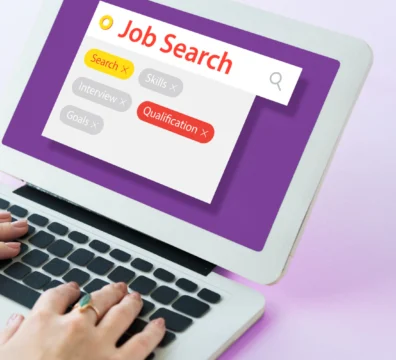You applied for a job in a top company, and after multiple rounds of interviews, you finally got the offer letter and accepted it. Now, do you just come to the office on the first day and dive head-first into work? No, right!
A proper employee onboarding process is necessary to integrate a new employee into the company’s culture and the role and responsibilities associated with that particular role. So, who conducts the onboarding process for new employees? In most companies, the HR will perform this vital task.
In today’s fast-paced business world, the role of HR in onboarding process is more crucial than ever. Effective onboarding sets the stage for long-term success, both for the employee and the organisation.
In this blog, we will explore how HR can enhance the onboarding process for new employees. We will explore practical examples and learn how to design effective programmes for streamlined onboarding. Let’s get started!
Understanding the Employee Onboarding Process
The employee onboarding process is crucial for integrating new hires into a company. It’s more than just paperwork and formalities. Onboarding sets the stage for an employee’s future in the organisation.
Here’s a closer look at what makes this process so important.
Firstly, Preparation is Key.
A lot needs to happen before a new employee steps into the office. HR should prepare their workspace, set up necessary technology, and plan their first day. It’s about ensuring everything is ready so the new hire can start smoothly.
Secondly, The First Day is Vital.
It’s the new employee’s first impression of the company. This day should focus on making them feel welcomed and valued. A great way to start the first day is by:
- conducting a friendly office tour
- introductions to team members and managers
- an overview of the company culture
- make them feel comfortable and part of the team
Thirdly, Effective Training Plays a Significant Role.
It’s not just about showing new employees their daily tasks but also helping them understand their role and how they fit into the larger picture.
Training for new employees can be offered in the following manner:
- performing practical tasks
- shadowing experienced colleagues
- having open channels for questions and feedback
This approach helps new hires gain the confidence and skills needed for their new role.
Finally, Ongoing Support is Essential.
Onboarding doesn’t end after the first week or even the first month. Regular check-ins, goal-setting sessions, and feedback opportunities are crucial. They help new employees adapt, grow, and feel supported throughout their journey in the company.
In conclusion, a well-structured onboarding process is invaluable. It’s not just about starting off on the right foot. It’s about building a foundation for long-term success and satisfaction in the workplace.
Innovative Onboarding Process Examples in Action
Innovative approaches to the onboarding process can significantly impact a new hire’s experience. Some examples demonstrate how companies can creatively enhance their employee onboarding process.
Interactive Onboarding Journeys
Innovate the employee onboarding process by creating interactive journeys. Instead of traditional presentations, use interactive modules where new hires can explore different aspects of the company. This could include
- Virtual tours of the office
- Interactive timelines of the company’s history
- engaging quizzes about company policies
This approach makes the onboarding process more engaging and memorable.
Social Integration Initiatives
Integrating new hires into the team is a key part of the employee onboarding process. Organise social events, like team lunches or group activities, as part of the onboarding process. This helps new employees build relationships and makes onboarding a more enjoyable experience.
Continuous Feedback Mechanisms
Integrate continuous feedback into the employee onboarding process. Set up regular check-ins and feedback sessions throughout the onboarding period. This allows HR to gauge the effectiveness of the onboarding process and make adjustments as needed. It also makes the new hire feel valued and listened to, enhancing their onboarding experience.
Designing an Effective Onboarding Programme for New Employees
Creating an effective onboarding policy for new joinees is vital for their successful integration into a company. A well-structured employee onboarding process can significantly improve new hire retention and satisfaction.
Here’s a look at a four-step employee onboarding process that can be a game-changer:
Step 1: Pre-Boarding
Even before a new employee’s first day, the employee onboarding process begins. Pre-boarding includes
- sending out welcome emails
- preparing necessary paperwork
- providing an itinerary for the first week
This step in the onboarding process helps to reduce the first-day anxiety. To ease the process, you can consider automated employee onboarding!
Step 2: Orientation
The orientation phase is the official start of the employee onboarding process. It usually happens on the first day and includes a welcome session, office tour, and introduction to team members.
The goal is to familiarise new employees with the company culture, their colleagues, and the work environment. An effective orientation makes new hires feel welcomed and valued.
Step 3: Role-Specific Training
After orientation, the employee onboarding process moves into role-specific training. This involves detailed explanations of job responsibilities, hands-on training, and setting short-term goals.
This step is crucial in the onboarding process as it equips the new employee with the necessary tools and knowledge to perform their job effectively.
Step 4: Ongoing Support and Integration
The final step in the employee onboarding process is ongoing support and integration. This includes regular check-ins, feedback sessions, and mentorship programs. It’s essential to make new employees feel supported and part of the team long after their initial start date. This ongoing support is essential for building confidence and fostering long-term engagement.
In short, a well-designed onboarding programme for new employees involves careful planning and execution at each step of the onboarding process. By following these four steps, companies can ensure their new hires are well-equipped, comfortable, and ready to thrive in their new roles.
How 6 Pence Helps
A successful employee onboarding process is critical to employee satisfaction, and HRs are instrumental in conducting this process from end to end.
However, the HR department in any company is already taxed with numerous responsibilities; thus, if you are looking to find the best-fit employees and streamline the onboarding process, then consult 6 Pence.
Our approach is designed to be comprehensive, efficient, and tailored to each organisation’s unique needs. When you partner with us for staff outsourcing, we help close open positions quickly and efficiently. But also extend our support beyond the recruitment phase. We help with payroll processing, onboarding, and paperwork processing and provide both employers and employees access to a 24/7 HR e-service portal.
We are not just limited to one location. Our operations span across Dubai, Bahrain, Oman, and Iraq. For more details, feel free to contact us directly.
Frequently Asked Questions
What is employee onboarding process?
The employee onboarding process is how new hires are integrated into an organisation. It involves equipping them with the necessary knowledge, skills, and behaviours to become effective company members. This process typically includes orientation, paperwork, training, and social integration activities.
What is the 4-step onboarding process?
The 4-step onboarding process typically includes:
- Pre-Boarding
- Orientation
- Training
- Ongoing Support
What is the onboarding plan of HR?
The onboarding plan of HR is a structured approach to integrate new employees into the company. It typically involves setting up objectives and timelines for each stage of the onboarding process. This plan is designed to ensure new hires receive all necessary information, training, and support to become productive and engaged members of the organisation.
Also Read: Boosting Employees Morale: 12 Strategy for Happier Workplace




































































































